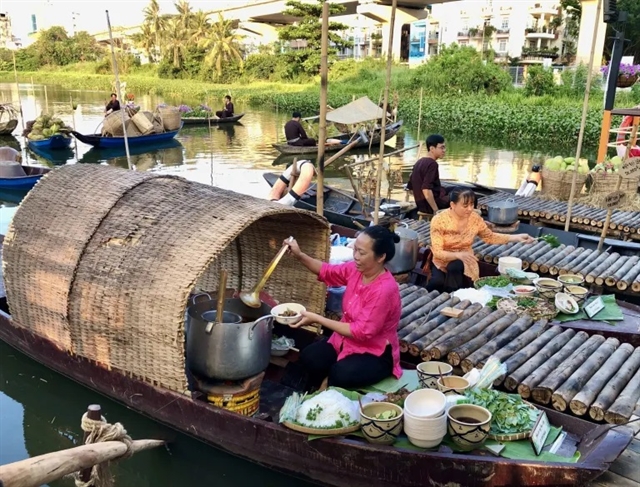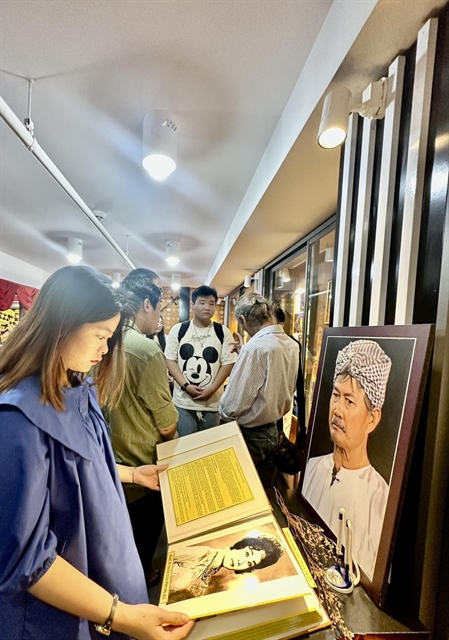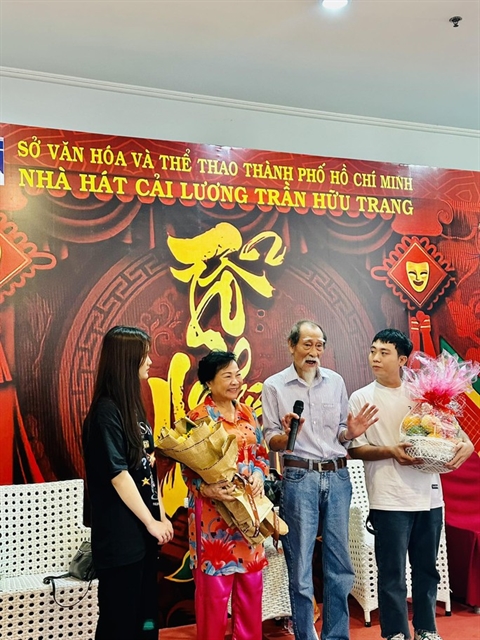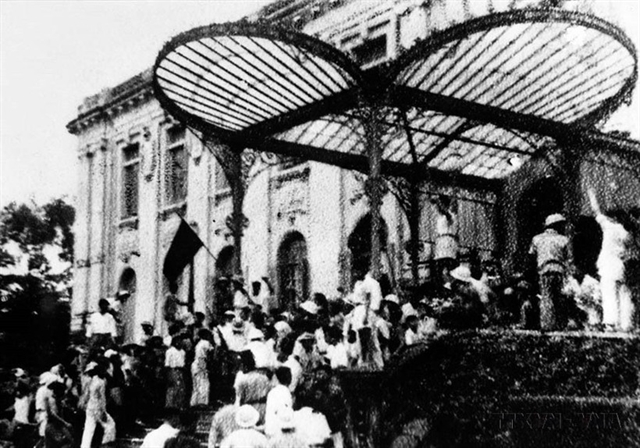 Life & Style
Life & Style


|
| CẢI LƯƠNG'S FUTURE: Young artists of Trần Hữu Trang Cải Lương Theatre follow in the older generations’ footsteps by helping to preserve cải lương. Photo courtesy of HCM City Theatre Association. |
By Thu Anh
HCM CITY — HCM City’s Theatre Exhibition Hall is organising talk shows, forums and exhibitions targeted at young people to learn more about cải lương (reformed opera), a 100-year-old traditional genre of southern theatre.
The events feature dozens of veteran artists, such as Meritorious Artist Ca Lê Hồng and Trần Hoàng Khanh, who perform and talk about their art.
These artists used their art to serve the revolutionary movement in South Việt Nam in the 1940s and 50s. They still work with leading art schools and theatres to offer training and art projects on cải lương.
Meritorious Artist Thanh Dậu and Mạnh Dung have been invited to talk and share their love and experiences on cải lương to 30 young artists.
“Through our career, we have hoped young artists will learn more about the country’s history and culture, and the contributions that southern artists made to Vietnamese theatre,” said Meritorious Artist Dung, who has 50 years in the industry.

|
| CẢI LƯƠNG'S HISTORY: Images and objects featuring cải lương (reformed opera) and its artists are on display at the Theatre Exhibition Hall in HCM City. — Photo courtesy of HCM City Theatre Association. |
Dung worked for the Cải Lương Nam Bộ Troupe, which opened in 1952 and attracted artists engaged in the revolutionary movement in South Việt Nam.
The troupe was formed from three cải lương troupes in the region. It sent its artists to perform at the National Music and Theatre Festival in Hà Nội in 1955 after the 1954 Geneva Agreement on Indochina was signed.
The troupe played a very important role in the theatre’s developments in the South. Its artists used their art to encourage southern people, intellectuals, poor farmers, and workers to be involved in the national revolutionary movement. Their plays portrayed patriotism and Vietnamese culture and characters.

|
| VETERAN ACTOR: Mertitorious Artist Mạnh Dung (second from right) talks and shares his love and experience on cải lương to young artists. — Photo courteysy of HCM City Theatre Exhibiotn Hall. |
Hall of fame
Theatre Exhibition Hall opened in 2020 and is managed by the Trần Hữu Trang Cải Lương Theatre, one of the region’s leading traditional art troupes.
It features information and images about cải lương, which began in the early 1920s in the Cửu Long (Mekong) River Delta region.
Many photos, books, documents and videos featuring the history and development of cải lương are displayed.
Images of Cải Lương Nam Bộ Troupe are also highlighted.
One of the troupe’s highlighted artists is Trần Hữu Trang, a revolutionary and recognised as a guru of cải lương.
Playwright Trang was born in 1906 in Chợ Gạo District of Mỹ Tho Province (now Tiền Giang Province). He began his career in 1928, working for leading troupes in Sài Gòn (now HCM City).
In the 1930s, Trang was at the peak of his artistry and fame, with plays such as Lan Và Điệp (Love Story of Lan and Điệp), Đời Cô Lựu (Lựu’s Life) and Tô Ánh Nguyệt (Miss Tô Ánh Nguyệt), which highlight Vietnamese women, their challenges and suffering under feudal society.
After the August Revolution in 1945, Trang joined the revolutionary cause and worked in Sài Gòn-Chợ Lớn. He was a member of the National Front for the Liberation of the South. He died in 1966 in battle. His body has never been found.
For his contributions, he was awarded the Hồ Chí Minh Prize by the Government in 1996. The region’s leading Trần Hữu Trang Cải Lương Theatre is named after him.
Trang was the first to feature women as leading characters in cải lương. He created more than 30 plays which all feature Vietnamese patriotism and characteristics. They have been staged many times by different generations at home and abroad.
“Our hall aims to honour cải lương and its veteran artists who used their art to encourage southern people and soldiers during the country’s two wars of resistance and national construction,” said Phan Quốc Kiệt, director of Trần Hữu Trang Cải Lương Theatre.
The hall opens daily at 515 Trần Hưng Đạo Street in District 1. – VNS


.jpg)

